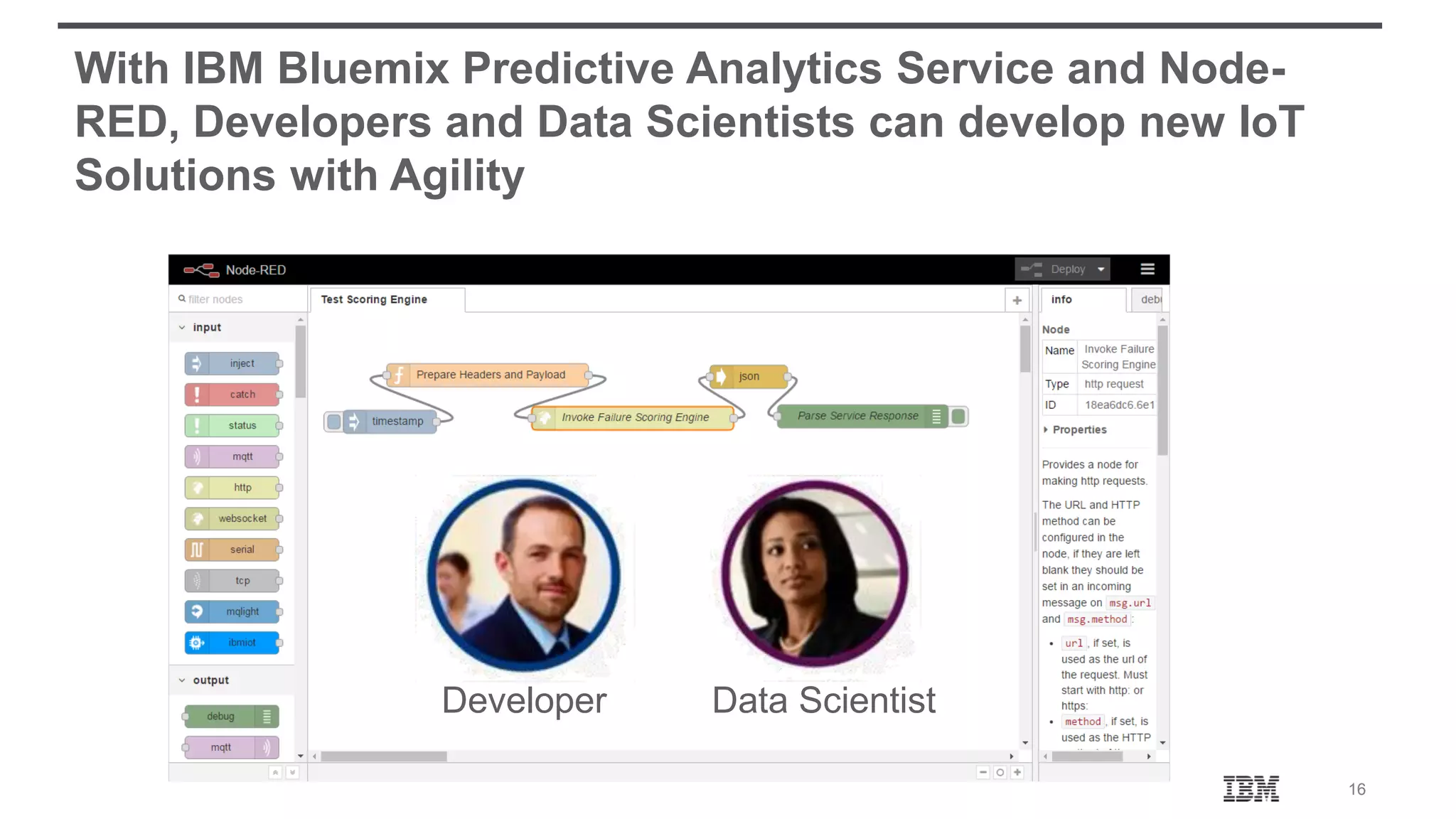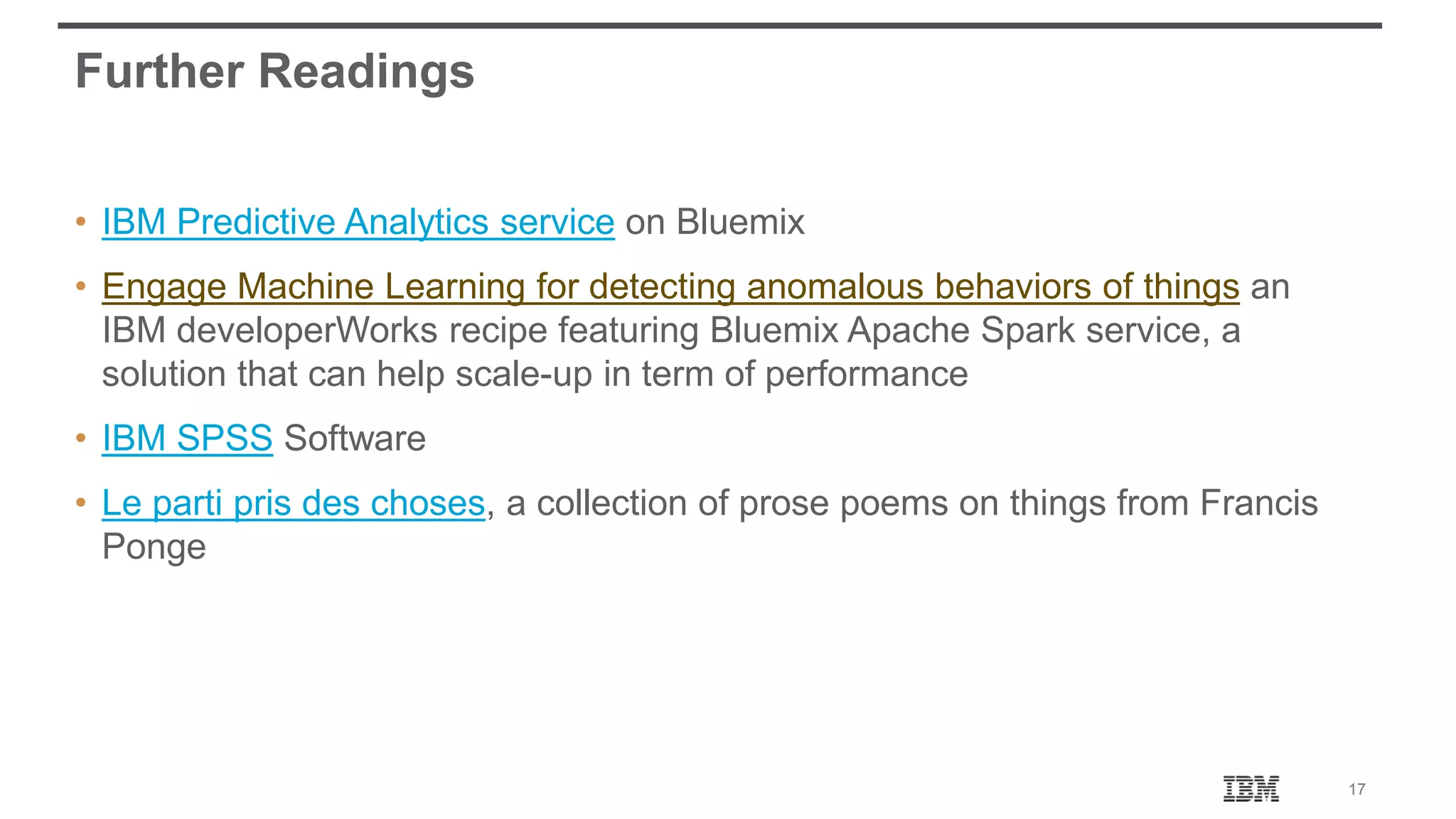This document describes how to use the IBM Bluemix Predictive Analytics service with Node-RED to enable collaboration between data scientists and developers for Internet of Things applications. It provides a step-by-step example of building a predictive model using sensor data from a TI SensorTag to detect failures, deploying the model on the Predictive Analytics service, and calling it from a Node-RED application. This allows data scientists to build models and developers to easily integrate predictive capabilities into their IoT solutions.

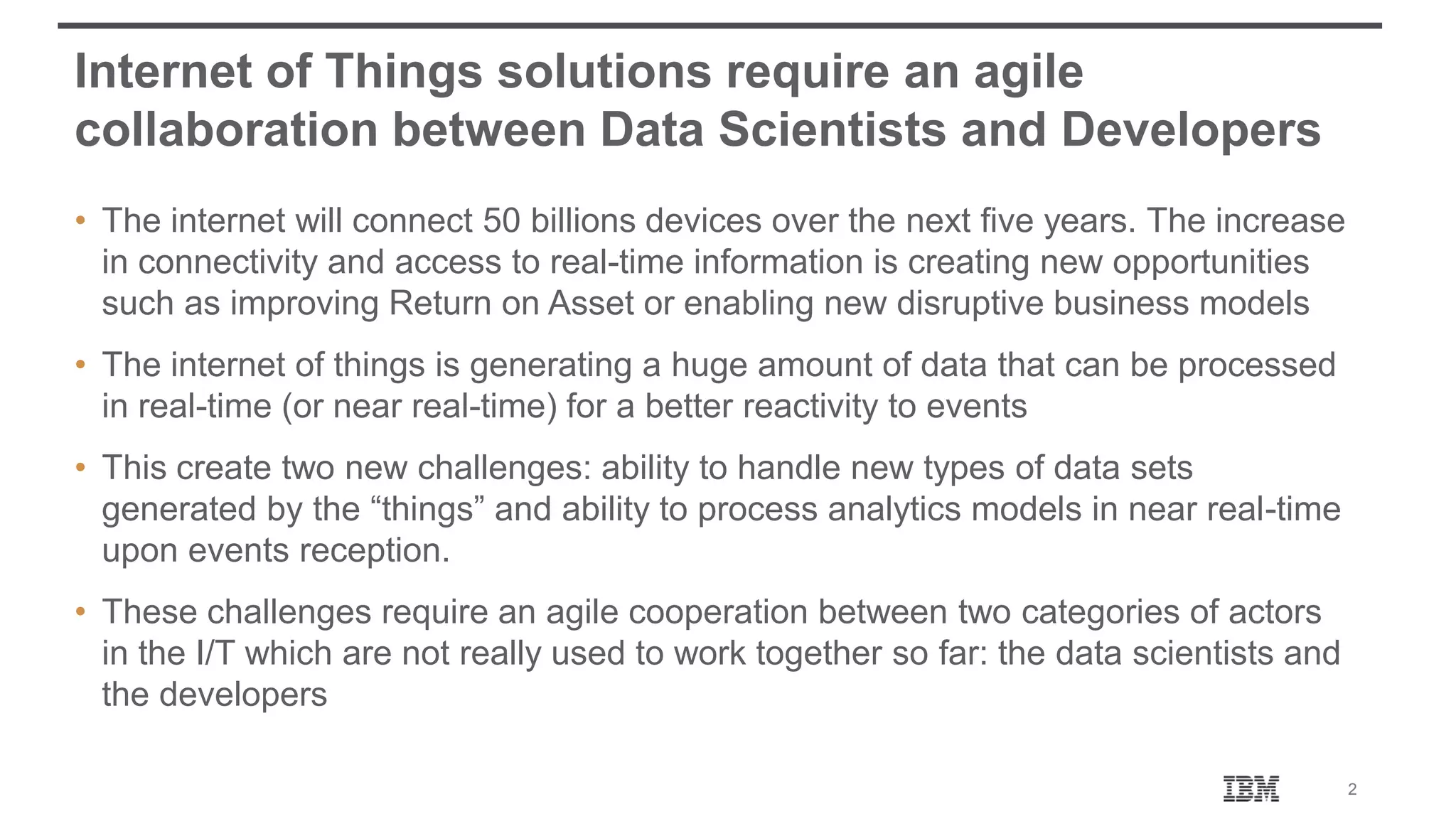
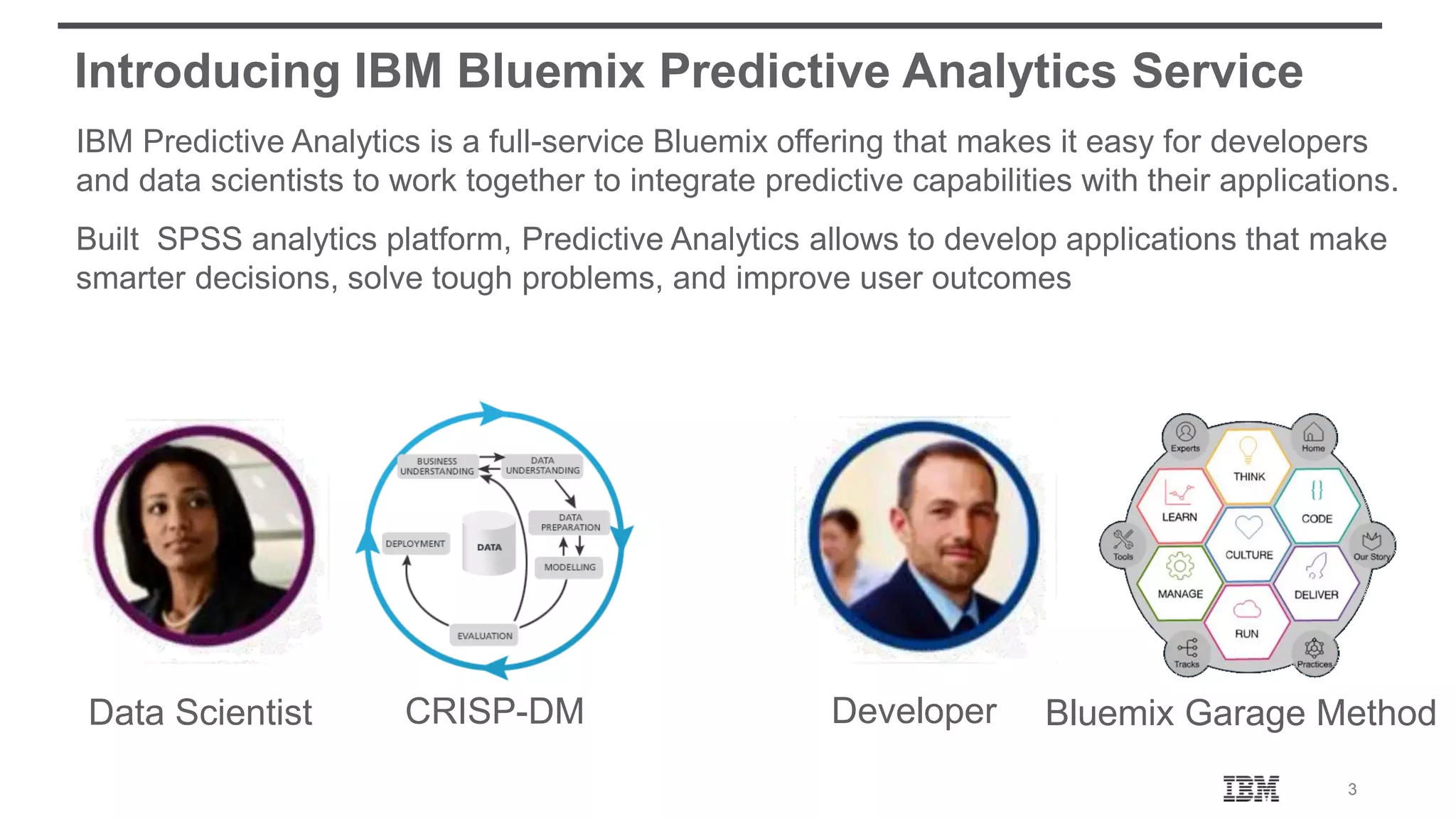

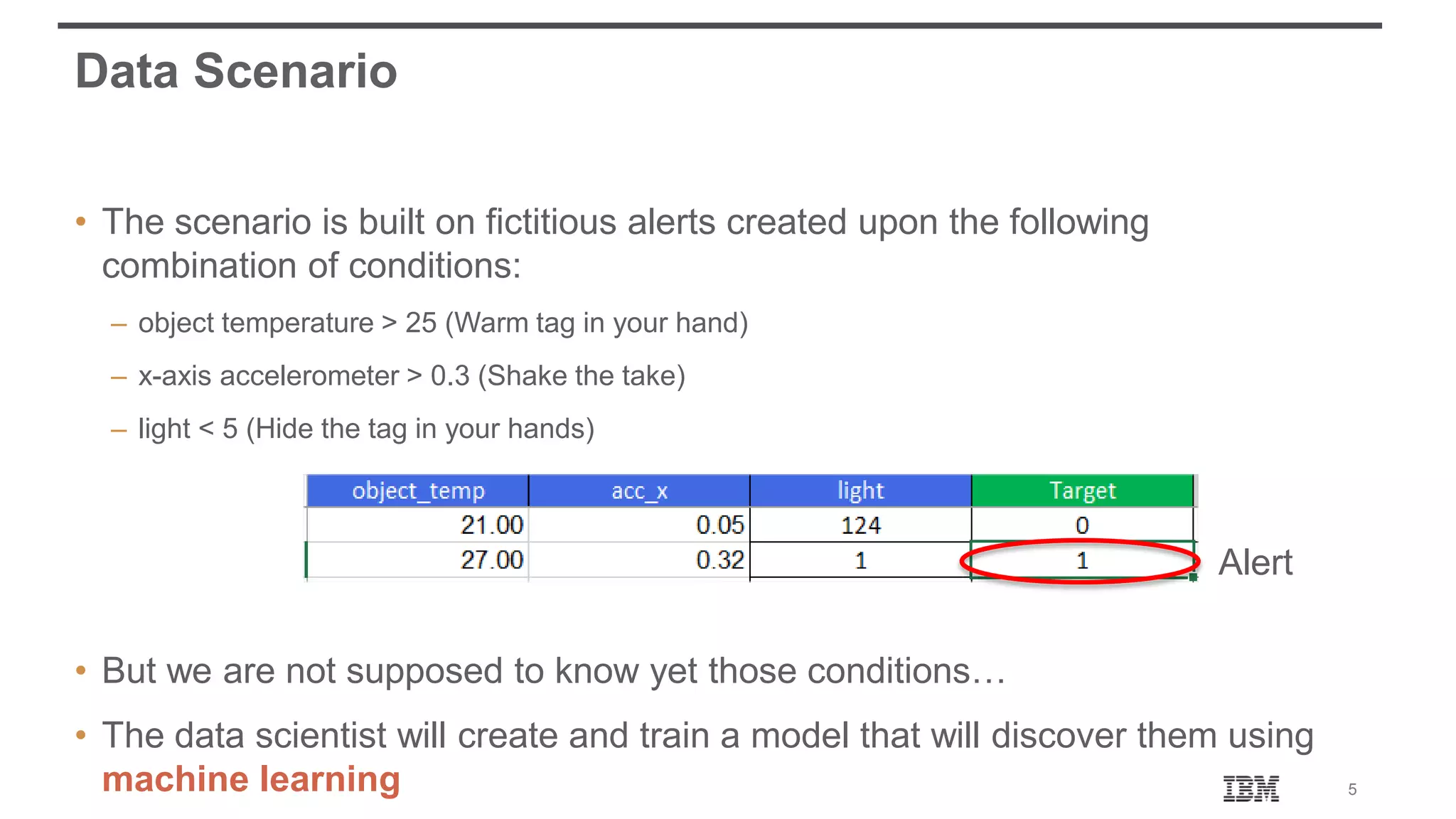

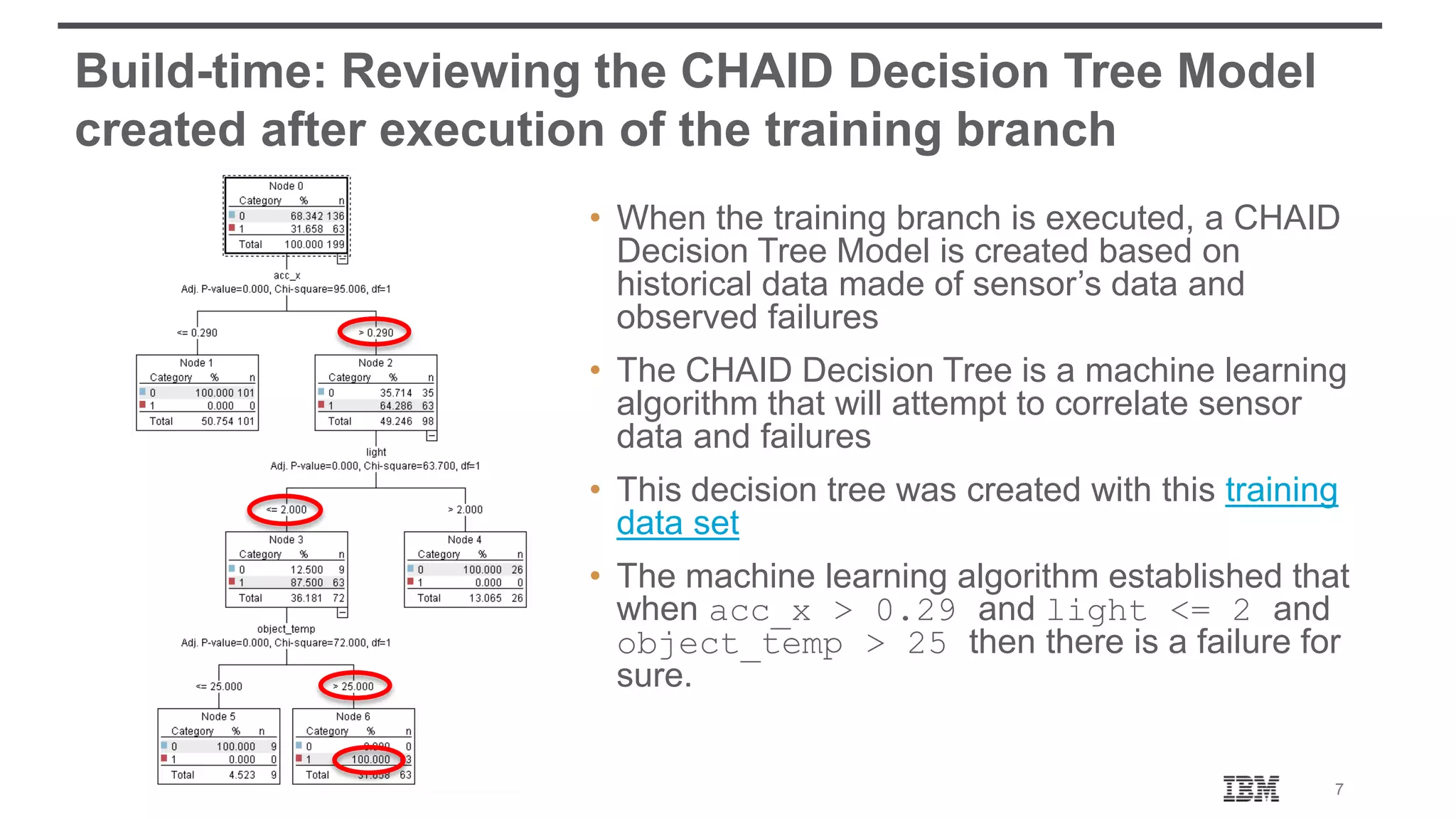

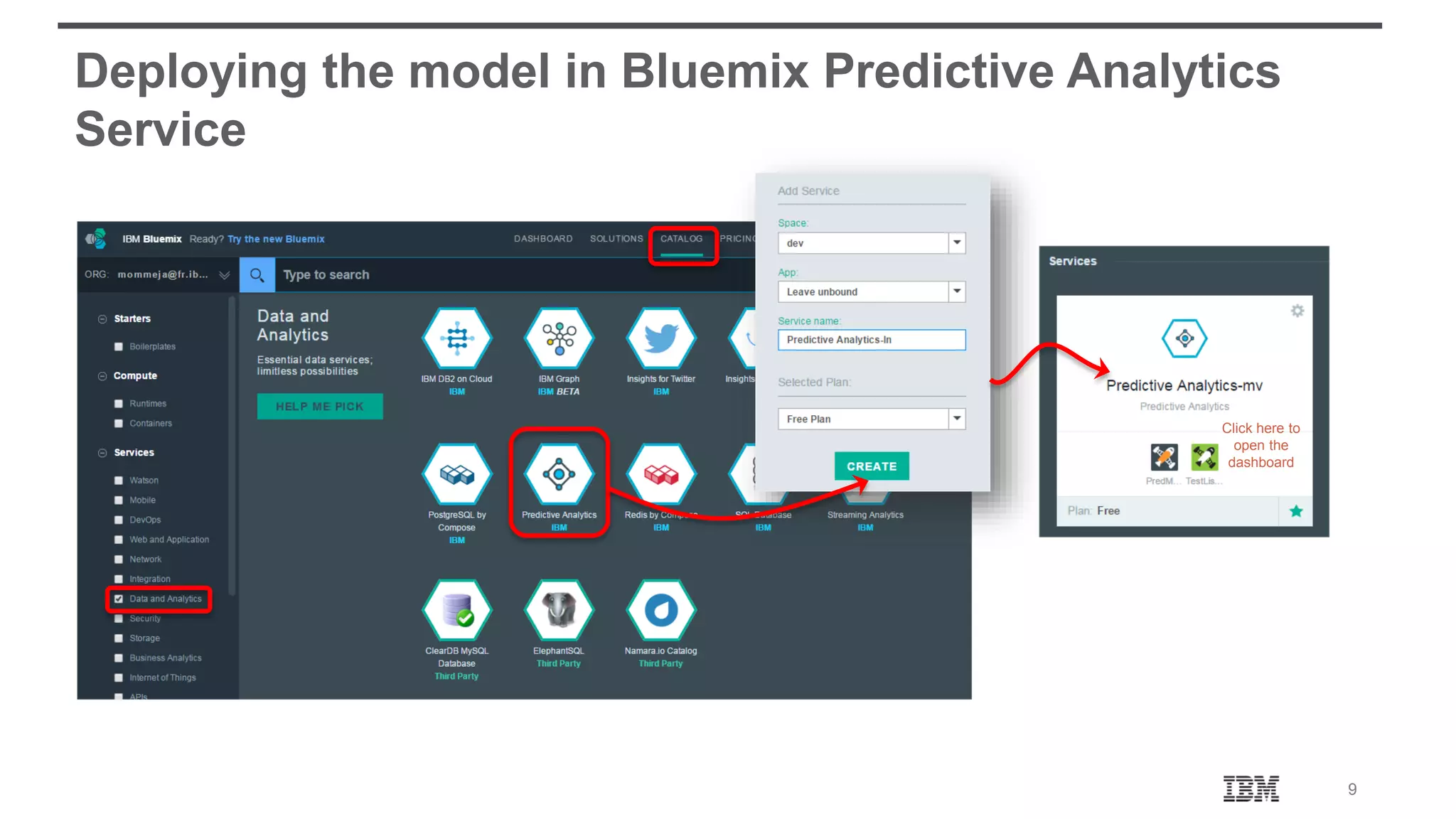

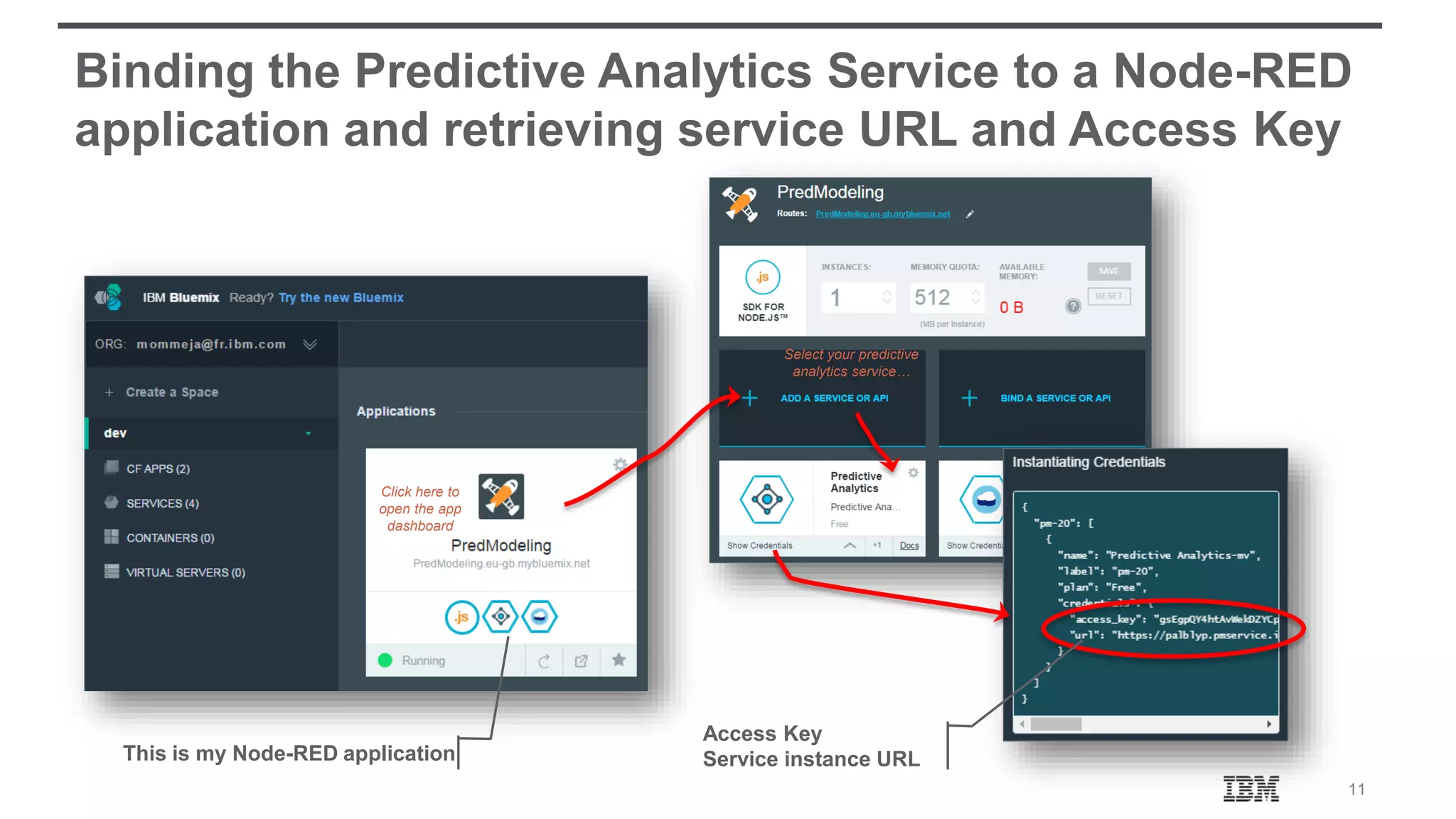
![12 Accessing Predictive Analytics API Documentation The Predictive Analytics service is a set of REST APIs called from any programming language. You can access it here: https://console.ng.bluemix.net/docs/services/PredictiveModeling/index-gentopic1.html#genTopProcId2 POST http://{service instance}/pm/v1/score/{contextId}?accesskey={access_key for this bound application} { "tablename":“Scoring Input", "header":["object_temp", "acc_x", "light"], "data":[[27, 0.33, 1]]} Body:](https://image.slidesharecdn.com/20160513-usingbluemixpredictiveanalyticsserviceinnode-red-160513154949/75/Using-bluemix-predictive-analytics-service-in-Node-RED-12-2048.jpg)
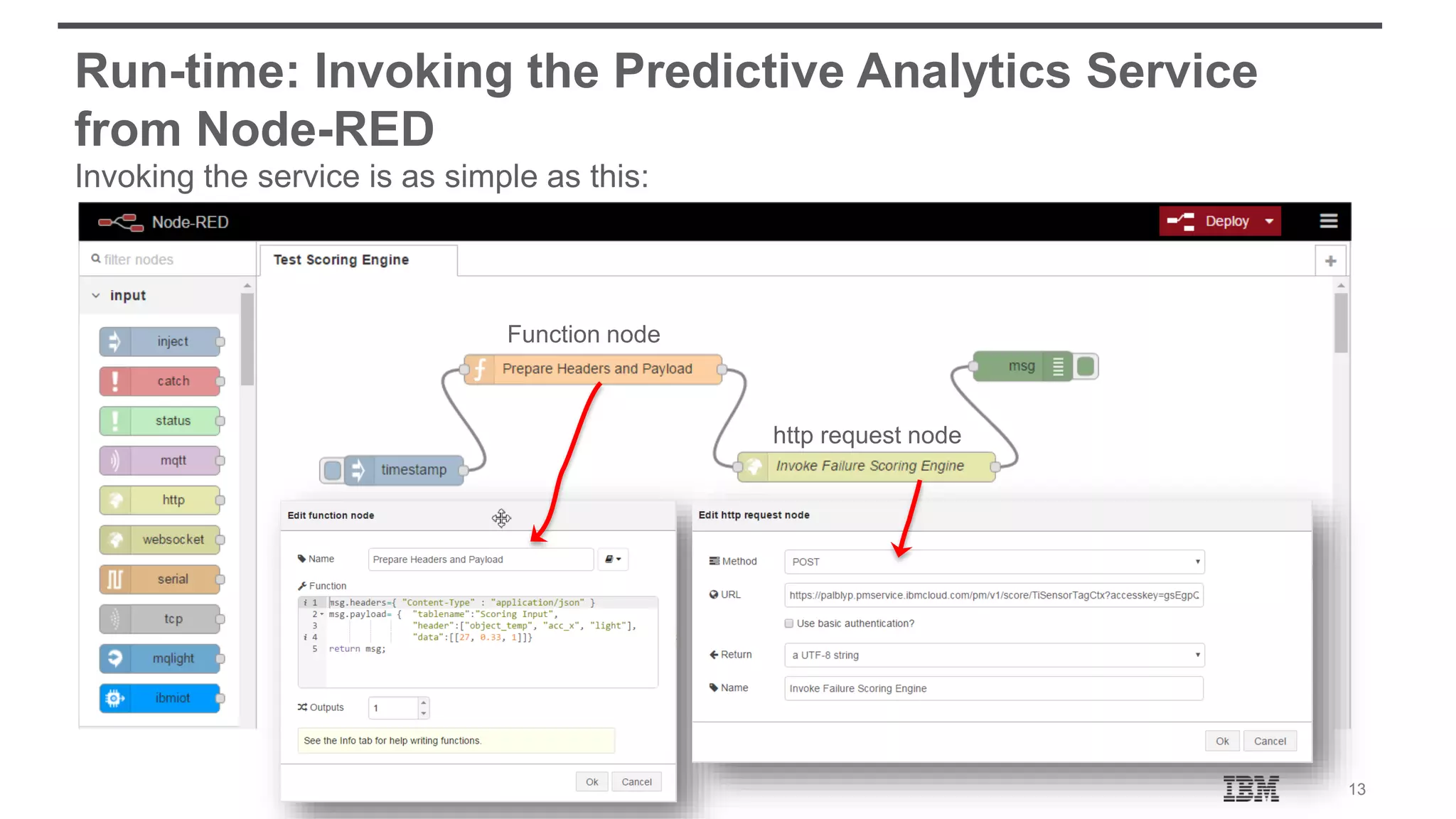
![14 Run-time: Invoking the Predictive Analytics Service from Node-RED Reviewing service invocation results { "topic": "", "payload": "[{"header":["object_temp","acc_x","light","$R-Failure","$RC-Failure"],"data":[[27,0.33,1,1,0.9846153846153847]]}]", "_msgid": "840e7dcc.7bf18", "headers": { "x-powered-by": "Servlet/3.0", "content-type": "application/json;charset=UTF-8", "content-length": "113", "date": "Thu, 12 May 2016 14:52:16 GMT", "set-cookie": ["PASESSIONID=ffffffff0602630a45525d5f4f58455e445a4a421548;path=/;domain=palblyp.pmservice.ibmcloud.com;httponly"] }, "statusCode": 200 } Score result Score input Score confidence](https://image.slidesharecdn.com/20160513-usingbluemixpredictiveanalyticsserviceinnode-red-160513154949/75/Using-bluemix-predictive-analytics-service-in-Node-RED-14-2048.jpg)
![15 Run-time: Parsing Predictive Analytics Service Results To make parsing easy, use JSON Node to convert json into a javascript object Accessing score result is now simple Score result { "topic": "", "payload": "[{"header":["object_temp","acc_x","light","$R- Failure","$RC-Failure"],"data":[[27,0.33,1,1,0.9846153846153847]]}]", …](https://image.slidesharecdn.com/20160513-usingbluemixpredictiveanalyticsserviceinnode-red-160513154949/75/Using-bluemix-predictive-analytics-service-in-Node-RED-15-2048.jpg)
